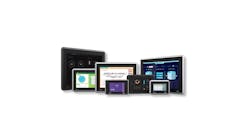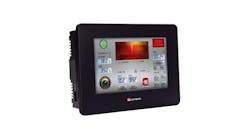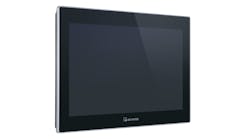What types of signaling devices make the most sense in hazardous locations?
Alvaro Sanchez, product manager, Rockwell Automation: Typically, high-output horns and high-brightness beacons are being used in these kinds of applications, as long as they meet the hazardous-location ratings required by the application. Products that are triple-certified (CULus, IEC/Ex and Div/Class) will help customers to deploy the same hardware globally.
Michael O'Neill, sales manager, Werma-USA: The main difference between equipment in hazardous and ordinary locations is the enclosure it resides in. For explosion-proof solutions getting a visual indication through a window of proper design to be explosion-proof is straightforward. Visual signals are commonly used. Issues occur when an audible signal is desired. Typically enclosures designed for explosion-proof areas—Class I, Div. 1 and Zone 1—do not vent sound well. For these applications if sound is required an intrinsically safe (IS) sounder with an IS Zener barrier is required. Since this design is inherently current limited, volume levels need to be considered. Additional sounders in strategic locations often resolve these concerns.
Carter Williams, product manager, Siemens: When using control devices in a hazardous location, special precautions must be taken to ensure the signaling device used doesn’t have the potential for igniting the fiber or gases that are present during operation. Class 51 pilot devices that are rated for NEMA 7 and 9 hazardous-location applications are suitable for most hazardous environments. There are several guidelines that have been set up to guide you with your product selection based on your specific hazardous environment. You should always reference your local codes and guidelines setup in the NFPA and/or ATEX, depending on which local codes apply in your region.
Vaidya “Doc” Patel, director, marketing & customer success, EZAutomation: Hazardous locations definitely need audio and video signaling devices to alert plant personnel. Visual devices should not only indicate the problem but also corrective action that needs to be taken to ensure safety of the plant personnel or evacuation procedure or directions.
Danny Weiss, senior product manager, Newark element14: We recommend indicating lights, pushbuttons and illuminated pushbuttons that are rated for Class I, Div. 2 environments when used with the intrinsically safe contact blocks. Easy-to-see indicating lights and illuminated pushbuttons can provide tremendous visual information, especially when combined with plantwide monitoring systems provide exceptional detailed information.
Tom Rosenberg, vice president of marketing and engineering, Balluff: Signaling devices for hazardous locations are more expensive; therefore, we typically see remote monitoring implemented. If operators are required in the hazardous area, fixed mounted signaling should focus on environmental conditions. As safe conditions decline, progressive warnings must be issued until an all-out evacuation signaling is required. At that point, signaling is augmented with high-intensity strobe and audible alarms with voice prompts.
Trey Gantt, product manager, Eaton: Meeting the applicable standards is critical. Devices that are impervious to even strong jets of water (IP66-rated fixtures), wide temperature operating range and 360° visibility and signaling can provide the right functionality in hazardous areas. Further, LED fixtures that last can help to reduce maintenance requirements.
John Curtin, director, automation solutions, Motion Industries: Several manufacturers make signal devices specifically designed for hazardous locations. These signaling devices are different in construction and method of installation than standard products used in nonhazardous applications. In order to select the proper device, the exact nature of the hazard in the area must be defined.
Alex Dzatko, proposals specialist, process automation, Pepperl+Fuchs: There are very few hazardous-location rated stacklights. However, there are many hazardous-location-rated buzzers, horns and operating elements, such as pilot lights, illuminated pushbuttons and more. Also, there are many HMIs that are certified for use in hazardous areas. These HMIs can work with the hazardous-location-rated buzzers, horns and pilot lights to help to diagnose and control an operation.
Robb Weidemann, senior business development manager, lighting and indication, Banner Engineering: Hazardous locations have similar indication needs as general-purpose environments and therefore should use comparable indicators modified to meet defined design and installation requirements. Electronic equipment that utilizes an intrinsically safe (IS) design can be used to mitigate risk in hazardous areas. IS design limits the power and heat created by an electronic device to a level below that required to ignite a specific hazardous atmosphere. This eliminates the need to isolate electronic equipment in explosion-proof enclosures, reducing the overall cost of a deployment and simplifying implementation.
Lyon Lee, product marketing manager, IDEC: First off, the signaling devices, such as the pilot light, must be certified for hazardous-location application, according to industry standards. Moreover, the equipment that controls the signaling devices shall also be hazardous-location-compatible. A number of PLCs, smart relays and HMI touchscreen products are certified in hazardous location for Class I, Div. 2 Group A, B, C, D.
ALSO READ: Remove the Stack Lights
About the author: Mike Bacidore
















